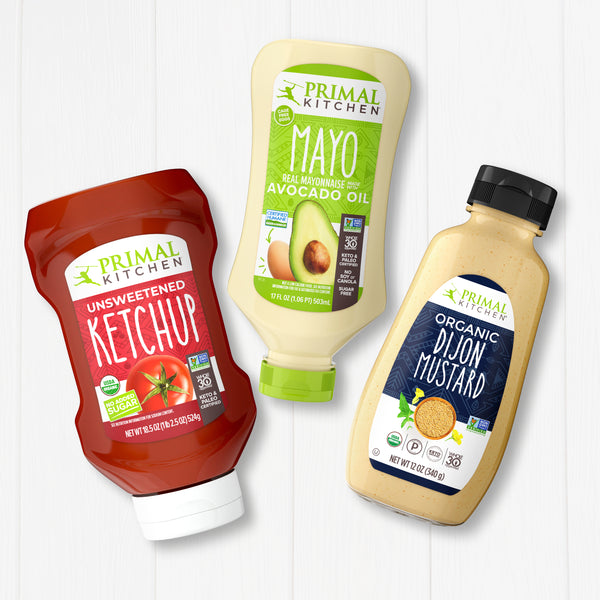What's So Great about Fermented Foods?
October 31, 2024
The topic of gut health has become wildly popular in health and wellness circles, spurring a growing appreciation of fermented foods. What’s the connection? Fermented foods often contain microorganisms, some of which you can find in probiotic supplements, that reside in the gut and help our bodies function optimally.
Peruse the refrigerated section of your local health food store, and you’ll find plenty of products touting their probiotic content and gut health benefits. Chances are, those products are fermented foods.
Although it might seem like all these fermented foods are relatively new to the scene, fermentation has been around for thousands of years at least. Just about every culture around the world has traditional fermented dishes on the menu.
In this post, we’ll explain why you should consider making fermented foods a staple of your diet. And if you’re already eating some fermented foods, you’ll hopefully be inspired to branch out and sample new varieties.

What Are Fermented Foods?
Fermented foods are produced by the process of fermentation, where microorganisms—bacteria, fungi, and mold—digest the sugars and starches in the food and create byproducts like acids and alcohol. At first glance, this might seem like a bad thing, but it’s actually awesome.
Here’s why: The microorganisms responsible for fermentation can be helpful to humans. Before we all had refrigerators, people needed other ways to keep food from spoiling and making them sick. Fermentation is one of the oldest methods of preserving food. When beneficial microorganisms secrete acids and alcohol, they create an environment where harmful bacteria, viruses, and other nasties aren’t happy to live.
But that’s not the only reason fermented foods are so great. Your intestinal tract already contains billions of microbes—some beneficial, some not so much. The “good guys” help you digest food and play important roles in your immune and nervous systems. One of the ways you can encourage more good guys than bad guys to take up residence in your gut is to eat fiber-rich foods and fermented foods with beneficial live microbes.
Fermenting also changes the flavor of foods, resulting in that sour, tangy, or even funky (in a good way) taste that you might be familiar with. Think about the distinctive taste of sour pickles, miso, or blue cheese; they’re all examples of fermented foods. And if you enjoy a pint of beer or a wine spritzer on the weekend, then you already appreciate fermentation.
The Wide World of Fermented Foods
From fermented condiments, sauces, and chutneys to fruits and vegetables, dairy products, grains, and even meat, there’s a virtually endless array of fermented foods to sample. Here’s just a taste of some of the ones you might already know and love:
DAIRY AND NON-DAIRY ALTERNATIVES
- Yogurt of all kinds
- Kefir, a drinkable yogurt-like product
- Cottage cheese
- Sour cream
- Buttermilk
- Many cheeses
VEGETABLES
- Sauerkraut
- Kimchi
- Pickles (not the ones made with vinegar, though)
BEVERAGES
- Kombucha
- Beet kvass
- Water kefir
- Beer
- Wine
SOYBEAN PRODUCTS
- Miso
- Tempeh
- Natto
- Soy sauce
CONDIMENTS & PANTRY ITEMS
- Apple cider vinegar
- Some hot sauces
- Worcestershire sauce
- Chocolate
Try These Recipes with Fermented Foods
The unique flavors and textures of fermented foods completely transform a dish. They can serve as a condiment, side dish, or even be the star of the show. Try these easy and delicious recipes that pair fermented foods with other real food ingredients:
Asian Noodle Bowl with Chicken
What to Know When Shopping for Fermented Foods
If you’re specifically looking for foods containing live probiotics, there are two essential tips to keep in mind:
- Shop the refrigerated section. Heat kills the microbes responsible for fermentation. That means the pickles you find in the middle of the supermarket won’t offer probiotic benefits—but they’ll still be delicious! Likewise, pasteurized apple cider vinegar and kombucha won’t contain any live cultures.
- Dairy products that contain living microorganisms will usually say so on the label. The FDA requires that dairy products touting “live and active cultures” must contain at least 100 million CFUs (living bacteria) per gram at the time of manufacturing with the expectation that 10 million survive throughout the shelf life of the product.
Give Fermented Foods a Try
It’s no wonder that fermented foods are so popular the world over. They’re delicious, diverse, and good for you to boot. Pairing fermented foods with other real ingredients like fruits, vegetables, meat, and seafood is an excellent way to create exciting, flavorful dishes.
With the incredible variety of fermented foods available, you should have no problem finding some that suit your palate. That said, if fermented foods simply aren’t to your liking, or you want to ensure you’re getting specific strains of probiotics, a supplement like Primal Probiotics could be for you. Supplements will deliver probiotics, but they won’t entice your taste buds, so it’s still worth dabbling in the world of fermented foods!
Once you find ones you enjoy, we bet you’ll be hooked.





































